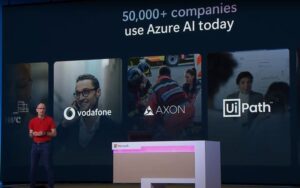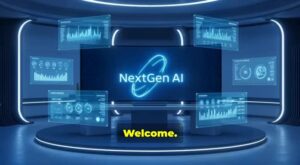Next-Gen Microsoft Models: Shaping the Future of AI and Enterprise Innovation
Introduction
Artificial Intelligence has entered a new era of rapid development, and Microsoft has positioned itself as one of the central players driving this transformation. Beyond its partnerships—most notably with OpenAI—Microsoft is also investing heavily in its own next-generation models, designed to enhance enterprise productivity, improve reasoning, and redefine how humans and AI interact across platforms like Microsoft 365, Windows, Azure, and GitHub.
These next-gen Microsoft models go beyond simple generative tasks. They are multi-modal, reasoning-first, and enterprise-focused, aiming to bridge the gap between human workflows and machine intelligence. In this article, we’ll explore how Microsoft’s upcoming AI models are structured, their core differentiators, the problems they solve, and the future they are expected to shape.
1. Why Microsoft Is Building Its Own Models
For years, Microsoft has relied on its strategic partnership with OpenAI to power its AI ecosystem, including Copilot in Microsoft 365 and GitHub. However, as competition intensifies with Google DeepMind, Meta, Anthropic, and a surge of open-source projects, Microsoft has recognized the importance of developing proprietary models.
Key Reasons Behind Microsoft’s Strategy:
-
Independence from OpenAI – While OpenAI remains crucial, Microsoft wants more control over performance, costs, and product integration.
-
Enterprise-specific requirements – Businesses demand models optimized for security, compliance, and industry use cases, which off-the-shelf models may not fully address.
-
Optimization for infrastructure – Microsoft can build models tightly coupled with Azure AI supercomputers, improving efficiency and reducing energy costs.
-
Vertical integration – Owning the full stack (hardware, models, applications) allows Microsoft to maintain a competitive edge.
2. Features of Next-Gen Microsoft Models
The upcoming wave of Microsoft models emphasizes practical utility, responsible AI, and scalability. Let’s break down the most prominent features.
a) Enterprise-Grade Security and Privacy
Unlike consumer-focused models, Microsoft’s models are tailored for corporate environments. Data encryption, secure deployment on Azure, and compliance with regulations like GDPR and HIPAA are baked into the foundation.
b) Multi-Modal Capabilities
The models are not limited to text. They process and generate across text, speech, images, and structured enterprise data, enabling advanced scenarios such as:
-
Reading financial reports and auto-generating insights.
-
Interpreting charts and suggesting strategy changes.
-
Summarizing video meetings in Microsoft Teams.
c) Reasoning-First Approach
Microsoft is working to make its models better at reasoning, decision-making, and following logical steps. Instead of just producing fluent text, these models focus on providing accurate, verifiable answers—a necessity in enterprise contexts.
d) Customization for Industries
One of the standout aspects of Microsoft’s approach is vertical optimization. Expect industry-specific models fine-tuned for:
-
Healthcare (clinical documentation, diagnostics assistance).
-
Finance (regulatory compliance, fraud detection).
-
Retail (personalized customer engagement).
-
Education (adaptive tutoring, learning assistants).
e) Energy Efficiency
Running massive AI models comes at a cost. Microsoft is designing its models to consume fewer resources, optimizing them for performance on Azure’s AI hardware (including NVIDIA GPUs and Microsoft’s own chips).
3. Integration Across the Microsoft Ecosystem
The power of these next-gen models lies not only in their capabilities but in their seamless integration across Microsoft’s platforms.
Microsoft 365 Copilot
Imagine Word drafting reports with advanced insights, Excel suggesting forecasting models, and Outlook summarizing long email chains with enterprise-specific context. Next-gen Microsoft models will deepen Copilot’s contextual awareness, enabling not just summaries, but recommendations, predictions, and scenario simulations.
Windows Copilot
Microsoft envisions AI as a core OS feature. Future iterations of Windows Copilot will act as a personalized digital agent, handling system commands, workflows, and cross-app productivity seamlessly.
GitHub Copilot
For developers, next-gen models will make code understanding, debugging, and documentation more powerful. They’ll not only generate code but also help reason about system design, detect vulnerabilities, and optimize for scalability.
Azure AI
Through Azure, Microsoft will provide businesses with access to customizable versions of its models. Enterprises will be able to fine-tune models with their proprietary data while keeping it secure in their own environments.
4. Competition and Differentiation
Microsoft is entering a fiercely competitive space. Let’s compare:
-
Google DeepMind Gemini models emphasize advanced reasoning and research-driven AI.
-
Meta’s LLaMA series focuses on open-source accessibility.
-
Anthropic’s Claude models prioritize alignment and safety.
-
OpenAI’s GPT models push the boundaries of general-purpose generative AI.
Microsoft’s Differentiator
-
Deep enterprise integration into Microsoft 365 and Azure.
-
Customization for industries and compliance-heavy use cases.
-
Hybrid AI strategy combining OpenAI models with its proprietary ones, giving businesses flexibility.
5. Real-World Use Cases of Next-Gen Microsoft Models
Let’s explore scenarios where these models will shine:
Healthcare
-
Automatically generating discharge summaries from patient notes.
-
Assisting doctors with evidence-based treatment suggestions.
Finance
-
Reading thousands of regulatory documents to highlight compliance risks.
-
Analyzing market trends and suggesting portfolio strategies.
Education
-
AI-driven personal tutors within Microsoft Teams.
-
Generating custom curriculum plans for diverse student needs.
Retail
-
Personalized shopping experiences across digital storefronts.
-
Predictive analytics to improve inventory management.
6. Responsible AI: Microsoft’s Ethical Framework
Microsoft has faced criticism in the past for AI missteps. To ensure trust, it is embedding responsible AI principles into model development.
Guiding Principles:
-
Fairness – Avoiding bias in outputs across demographics.
-
Transparency – Clear disclosure when users interact with AI.
-
Safety – Mitigating risks of misinformation or harmful outputs.
-
Accountability – Building tools for human oversight in enterprise use.
By prioritizing these, Microsoft aims to position itself as not just a tech leader, but also an ethical leader in AI.
7. Technical Innovations Powering Microsoft Models
Advanced Training Infrastructure
Microsoft’s AI supercomputers, built on Azure cloud + NVIDIA GPUs + custom AI accelerators, enable scaling models into the trillions of parameters while managing costs.
Smaller, Efficient Models
Alongside massive models, Microsoft is developing compact AI models that can run on edge devices, ensuring low-latency performance for tasks like on-device translation or personal assistants.
Memory and Context Handling
Next-gen Microsoft models are expected to handle longer context windows, enabling them to process large documents, entire codebases, or extended conversations without losing track.
8. The Future of Microsoft’s AI Models
Looking ahead, Microsoft’s models will likely evolve in three key directions:
-
Autonomous AI Agents – Future iterations may act as decision-making agents, executing tasks across software ecosystems with minimal user input.
-
Hybrid AI + Human Collaboration – AI won’t replace humans, but will become a co-pilot in every workflow.
-
AI-Powered Enterprises – From customer service to R&D, businesses will reconfigure processes around AI-driven insights.
9. Challenges Ahead
Despite the promise, Microsoft faces hurdles:
-
High infrastructure costs of training and running massive models.
-
Regulatory scrutiny in the EU, US, and Asia on data use and AI transparency.
-
Competition from open-source AI that grows more capable and cost-efficient.
-
User trust – ensuring businesses feel safe deploying AI in sensitive environments.
Conclusion
Microsoft’s next-gen AI models represent more than just an incremental upgrade. They are part of a strategic evolution that positions Microsoft at the forefront of enterprise-focused AI innovation. By combining multi-modal capabilities, deep reasoning, enterprise customization, and ethical AI practices, these models are set to redefine productivity tools, reshape industries, and reimagine how humans and AI collaborate.
The future of work and technology will likely be AI-augmented at every level, and with its unique position across software, cloud, and enterprise solutions, Microsoft has the potential to become the default AI provider for the global workforce.
For quick updates, follow our whatsapp channel –https://whatsapp.com/channel/0029VbAabEC11ulGy0ZwRi3j
https://bitsofall.com/ai-data-center-expansion-powering-the-future-of-artificial-intelligence/
Baidu’s ERNIE X1.1 — a reasoning-first model that tightens the gap with Western giants






